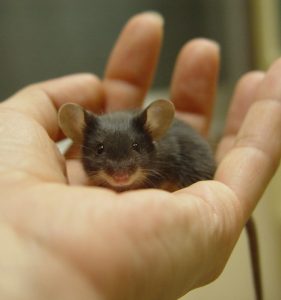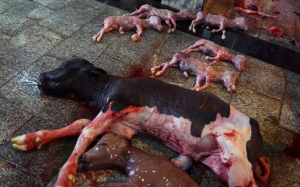
A sketch depicting mutual dependency in human-animal relationships. Source: The Telegraph UK
Human dependency on animals has a long history spanning over a million years. Historically humans have partnered with animals for a variety of purposes required for their mutual consumption and existence. From domesticating animals for meat, agricultural practices, hunting activities, transport etc.., to employing them for developing and testing therapeutics, it would not be completely wrong if I were to say that we humans became a little selfish along the way. For more than a decade there has been an increase in this awareness but there is still an ongoing debate with the pros and cons of employing animals for research. But how far have we come along in developing effective medications at the expense of animal welfare? Read more to find out! (P.S Some images have graphic content!)

Rodents are most commonly used laboratory organisms. Source: Flikr
First of all, if we look at the historical origin of using animal models for research, the idea was born 2400 years ago when researchers realized the functional and anatomical similarities between humans and animals. Prominent thinkers such as Aristotle documented their findings based on observational and experimental studies conducted on animals and this was further spread across Europe and other parts of the world. With technological advancement in the previous decade such as sequencing of mouse and rat genomes and the development of the first knockout mice/rat , animal models have become an indispensable tool in biological research. Advantages such as the ability to recapitulate life processes, understand mechanisms under normal and diseased conditions and manipulate these mechanisms to develop novel effective therapies have favored their increased use in research. Significant breakthroughs have been made using animal models in the past decade in fields such as aging, neurodegenerative disorders, different types of cancers, gene editing etc…

Bovine fetuses are subjected to cardiac puncture during FBS extraction.Source: Trancend.org
One could argue that animals models promote animal welfare by developing therapeutics for animal diseases however majority of experimentation conducted on animals are extremely inhumane. To give you an image of how badly animals are exploited, let me state an example. Foetal bovine serum (FBS) is a constituent derived from young calves that is used for culturing human/animal cells outside the body. It is widely used by labs across the world but not many researchers are aware of its ethical concerns. FBS is harvested from bovine fetuses by puncturing the heart using a syringe and drawing blood. All this is done without anesthesia! And the reason this is being done in live organisms is because blood drawn from dead fetuses have the tendency to clot which is unfavorable for research purposes.

Source: Flikr
For experimental purposes animals are subjected to various activities that involves restraining, collection of blood samples from various parts of the body, performing surgeries with or without anesthesia, overdosing, behavioral tests, inoculation of tumor producing cells, sacrificing and harvesting body organs for analysis etc.. which causes severe discomfort to animals. Even though its extremely difficult to eliminate animals from being used in research, steps can still be taken to reduce suffering as much as possible.
So where do we currently stand and what can we do to promote animal safety ?There has been a major debate in the past decade and a lot of steps have been adopted in hope to promote animal welfare. Recently, 3D cell culture systems, micro arrays, artificial organs, organs on an electronic chip, computer based simulations have been developed, it is better to reduce animal experimentation as much as possible or replace them completely using these or other alternative strategies. Adaptation of the 3 R’s that aims to replace, reduce and refine the use of animal experiments needs to be strictly employed by research investigators to ensure animal welfare. Scientific personnel must be well trained in animal handling and certified prior to conducting experiments. Furthermore, the concept of ethical applications have been adopted by various countries that evaluates project plans prior to conducting experiments. These evaluation committees are composed of panelists from various backgrounds that assess and approve whether a certain study ensures animal safety or not. Most cosmetic industries are also adopting to cruelty free methods of testing their products, which are increasingly popular among their consumers, this should be encouraged further.

Source: Flikr
In conclusion, it is possible to adopt alternative strategies but currently it is not feasible to completely abandon the use of animals in research. Some would argue that this is still beneficial for a mass population when compared to the sacrifice of a small percentage of animals. That small percentage could grow rapidly and possibly lead to ecological imbalances and suffering in the future so this issue still needs to be taken seriously. With rising technological advancements and inventions such as organ on a chip (video by Wyss institute included below) there is a small ray of hope that animals will be completely spared from being used in scientific experiments.
Written by Harshitha Nagesh

One response to “Animal testing: Where do we stand?”